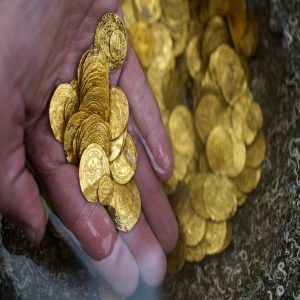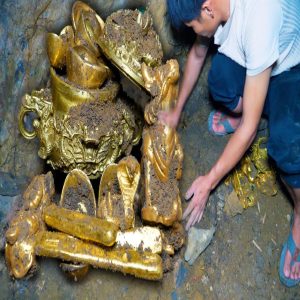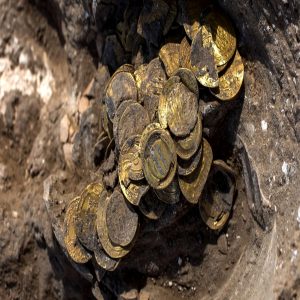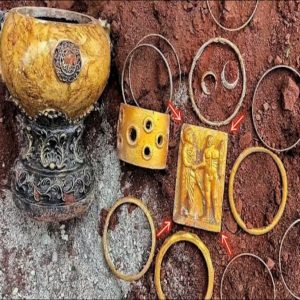During the excavations carried out in the ancient city of Hadrianopolis in the Eskipazar district of Karabük, an amulet depicting Solomon on horseback spearing the devil, dating back to the 5th century AD, was unearthed.
Excavation and restoration work continues in the ancient city, which was used as a settlement in the Late Chalcolithic, Roman and Early Byzantine periods, under the leadership of Assoc. Prof. Dr. Ersin Çelikbaş, Department of Archaeology, Faculty of Letters, Karabük University, within the scope of the Heritage to the Future Project of the Ministry of Culture and Tourism.

A group of researchers excavating at Hadrianopolis. (Karabük University)
In the ancient city, which is famous for the mosaics depicting many animals on the floors of the churches and therefore called “Zeugma of the Black Sea”, structures such as two baths, two churches, a defensive structure, rock tombs, a theater, an arched and domed structure, a monumental cult niche, a city wall, a villa, other monumental buildings and some cult areas have been found so far.

An amulet dating back to the 5th century AD was recently unearthed during excavations, depicting Solomon on horseback spearing the devil. (Karabük University)
Assoc. Prof. Dr. Ersin Çelikbaş, Department of Archaeology, Faculty of Letters, Karabük University, provided information about the excavations carried out in the ancient city of Hadrianopolis in 2024. Çelikbaş stated that the excavations carried out within the scope of the “Heritage for the Future Project” of the Ministry of Culture and Tourism were concentrated at the point called SDJ-3 and announced that important findings were unearthed.

Prof. Dr. Ersin Çelikbaş announces the find at the Hadrianopolis site. (Karabük University)
A Rare Find in the Region
Assoc. Prof. Dr. Ersin Çelikbaş stated that this artifact is a very important discovery for Anatolian archaeology and said:
“No similar examples have been found in this geography before. This pendant, used as an amulet, draws attention with the inscriptions on both sides and the depiction on it. The amulet depicts Prophet Solomon on a horse, holding a spear, defeating the devil. Prophet Solomon is an important figure in all three holy religions. While he is mentioned as a ruler in the Torah and the Holy Bible, he is also accepted as a prophet in Islam. The depiction of Prophet Solomon on this necklace surprised us and revealed the importance of the artifact for Anatolian archaeology. The phrase, ‘Our Lord defeated evil,’ is written on the necklace.”
Assoc. Prof. Dr. Çelikbaş, who also stated that the presence of this pendant in the ancient city of Hadrianopolis is related to the military nature of the city, said,
“In our previous excavations, we had determined the existence of a cavalry unit here with concrete data. Hz. Süleyman is also known as the commander of the armies. We understand that he was also thought of as a protective figure for the cavalrymen of the Roman and Byzantine periods in Hadrianopolis.”
Çelikbaş, who stated that the names of four holy angels, namely Azrail, Gabriel, Michael and Israfil, are on the back of the work, said:
“No similar example to this amulet has been found in Anatolian archaeology to date. Only a similar depiction has been unearthed in Jerusalem, the capital of Palestine. The presence of similar works in these two distant geographies indicates that Hadrianopolis was an important religious center in ancient times.”
According to the static graphic analysis, the amulet was dated to the 5th century AD. It was stated that this discovery once again revealed the historical and religious importance of Anatolia.





